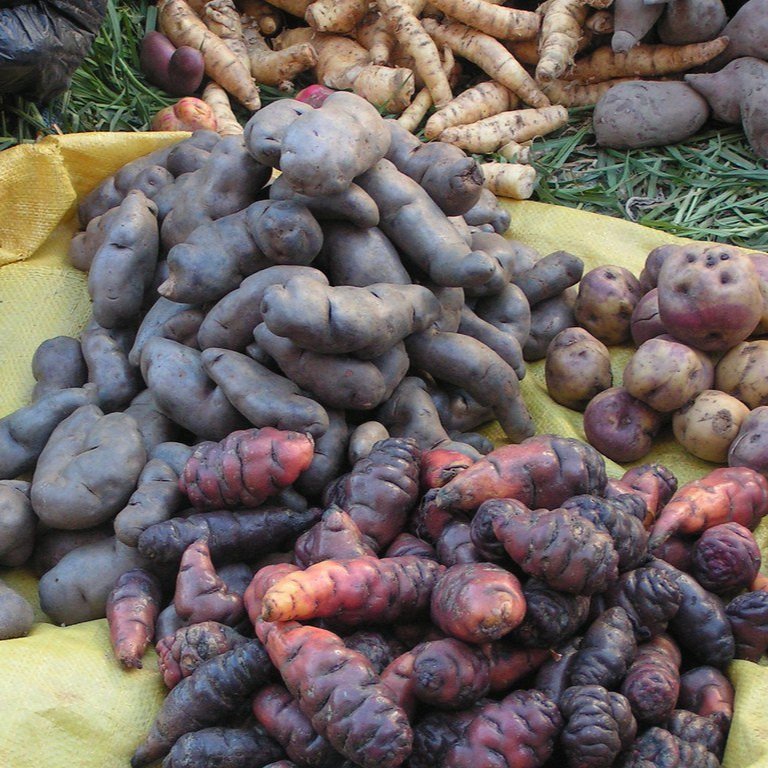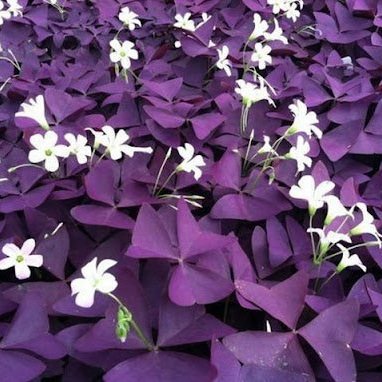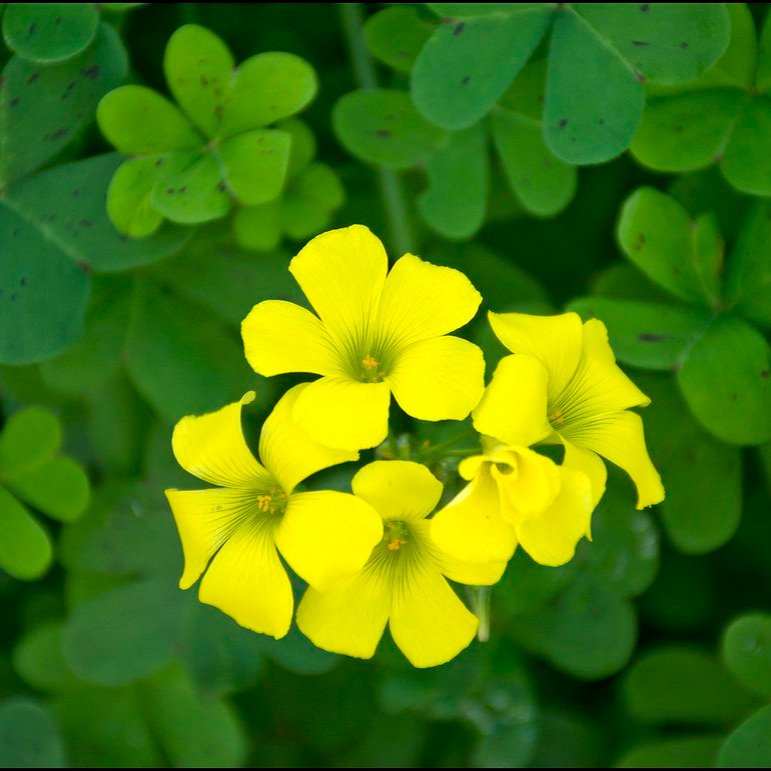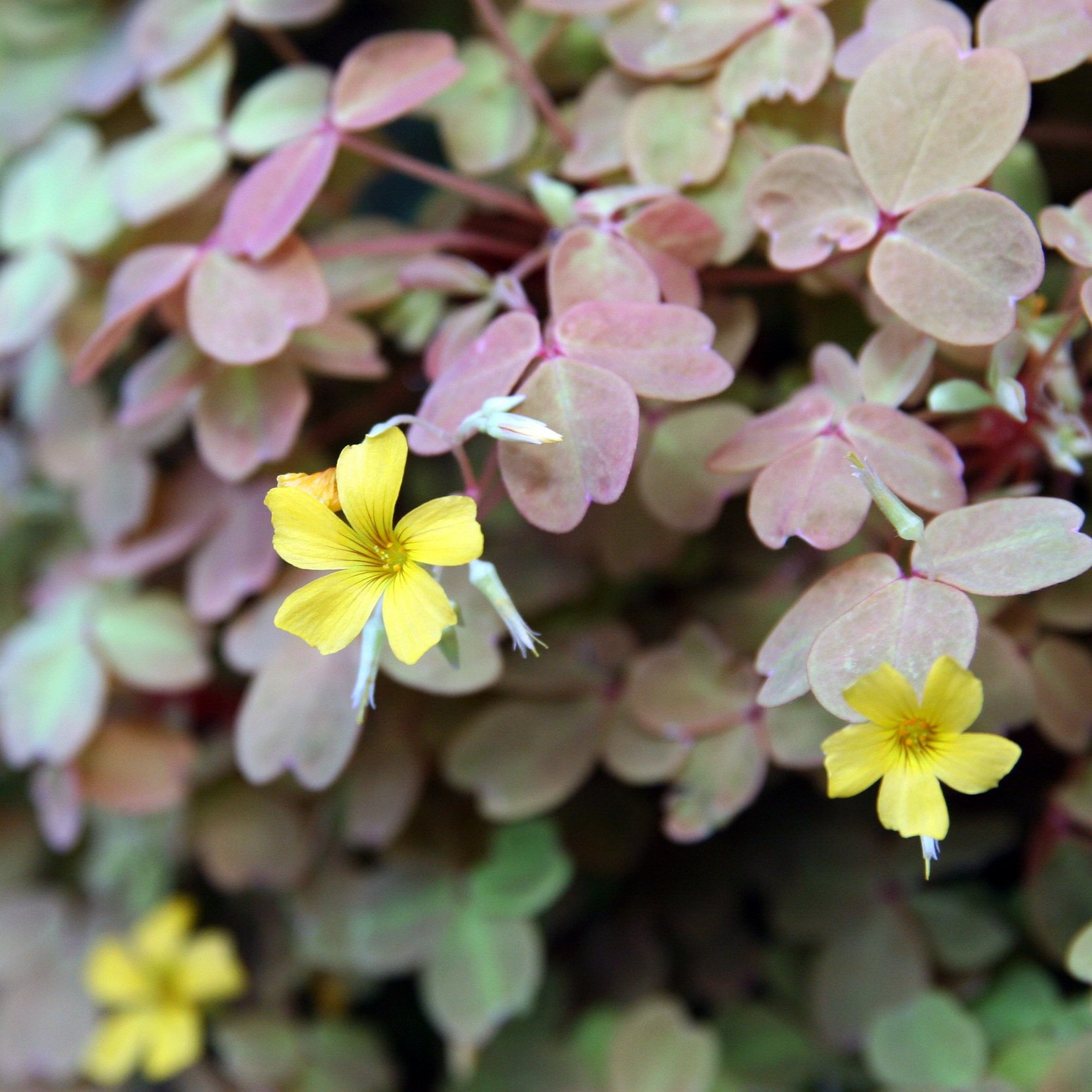Oxalis: Angel or Devil? A Versatile Genus with A Dark Side
By: Annie
The Oxalis genus, comprising over 800 species, is a diverse and fascinating group of plants known for its wide range of uses in both the culinary and ornamental realms. From delicate, shamrock-like leaves to vibrant flowers, Oxalis captivates gardeners and foragers alike. In this exploration, we will delve into the dual roles of Oxalis as an edible and ornamental plant, while also addressing the methods for controlling its potential as a deeply annoying weed.
Edible Delights:
Oxalis is not just a garden beauty; it has also earned a place on the table. One species grown in the Andes, Oxalis tuberosa, has been cultivated for its edible tubers since pre-Columbian times.
Known as uqa in Quechua (indigenous Andean), oca in Spanish, and yams in New Zealand, it might well be the oldest of the Andean root and tuber crops, and is second in importance in the region only to the potato.
This crop has great potential for consumer appeal elsewhere thanks to the bright colors of the tubers (yellow, orange, pink, and the traditional red) and their pleasant taste. In fact it was introduced to Europe in 1830 as a competitor to the potato, and to New Zealand as early as 1860, it has become a popular table vegetable simply called yams (although it’s not a true yam).
The most well-known edible species in the USA on the other hand is Oxalis acetosella, commonly known as wood sorrel. Its tender, heart-shaped leaves boast a distinct lemony flavor, making them a delightful addition to salads, soups, and garnishes. Wood sorrel is rich in vitamin C and adds a refreshing zest to culinary creations. As with any foraged plant, it is crucial to positively identify the species and gather from pesticide-free areas before incorporating it into your meals.
Ornamental Allure:
Beyond its culinary applications, Oxalis brings ornamental charm to gardens and landscapes. Many species feature striking foliage that ranges from green to purple, often shaped like shamrocks or clovers. The dainty, five-petaled flowers, which come in an array of colors including pink, white, and yellow, add a whimsical touch to garden beds and containers.
Popular ornamental varieties include Oxalis triangularis, (shown) known for its deep purple leaves, Oxalis volcanicola, known for bright colors and used as a groundcover or trailing plant in containers, and Oxalis regnellii, with its vibrant greenery and delicate blooms. These plants thrive in various climates and make excellent choices for both indoor and outdoor gardens.
Controlling Oxalis as a Weed:
While Oxalis can be a delightful addition to gardens, some species have a tendency to become invasive and earn the label of a weed. Oxalis pes-caprae (shown) with its acid-yellow flowers is a particularly vigorous and irritating weed around here, and many hairs have been pulled from a gardener’s head in their efforts to eradicate it.
Yes, you may have enjoyed a hearty chortle at the sight of Instagrammers photographing themselves in a field of Oxalis weeds and waxing lyrical about California’s wildflower superbloom event in the description. But you may also have felt a pang of sadness for the field’s owner. Their pasture is overrun by youthfully ignorant social media types, but worse, it’s loaded with weeds…
Preventing and controlling Oxalis requires a strategic approach to prevent it from overshadowing other desirable plants. Here are some methods for managing Oxalis as a weed:
Use Clean Soil:
Prevention is better than cure. Make sure that any soil brought into your garden is “clean.” That means, it isn’t infested with Oxalis bulbs, waiting to spring to life and ruin your garden. Beware “free soil” ads on Craigslist! Oxalis pes-caprae spreads very slowly via bulbils (bulb offsets) in the ground, but very quickly when contaminated soil is moved about!
Manual Removal:
Gently (so as not to rip off only the tops) pull Oxalis plants by hand, in spring - well before they multiply by creating new bulbs, at what’s called the bulb exhaustion stage*. When weeding, ensure you remove the entire root system. This method is most effective when dealing with small infestations, but for a larger infestation, particularly of Oxalis pes-caprae, whose bulbs may be very deep in the ground, systematically weakening the plant over a period of years may be your best bet. This is achieved by hoeing or weeding out the plant multiple times every spring, until it is eventually eradicated.
Mulching:
Apply a thick layer of organic mulch to suppress Oxalis growth. Mulch not only inhibits weed germination but also helps retain soil moisture and regulate temperature. Adding a layer of corrugated cardboard underneath your mulch provides an even more effective barrier to Oxalis bulbs beneath, though it will compost down in about a year.
Selective Herbicides:
For more extensive infestations, consider using selective herbicides that target Oxalis while sparing surrounding plants and insects. Always follow the product's instructions and use chemicals responsibly. While we don’t recommend herbicides due to their impact on other plants and the environment, we do understand the pain of Oxalis…
Cultural Practices:
Encourage healthy plant growth among the plants you like by providing proper spacing, adequate nutrients, and regular watering. Strong, vigorous plants are better equipped to compete with and resist Oxalis intrusion.
Conclusion
Oxalis stands out as a genus that seamlessly integrates into both the culinary and ornamental realms. As with any plant, understanding its characteristics and implementing proper management practices are essential to harness its positive attributes while controlling its potential as a weed.
Whether gracing your plate with a touch of citrus or enhancing your garden with vibrant colors, Oxalis is a versatile genus that invites exploration and appreciation. And, yes, deep hatred!
* According to https://weeds.org.au/profiles/soursob-bermuda-buttercup/
“The plant must be attacked at a critical stage in its life cycle called the bulb exhaustion stage. This is when the food material of the bulb is exhausted and any new bulbils are not sufficiently developed to survive. Unfortunately this stage cannot be accurately determined by looking at the aerial growth, only by digging up plants and inspecting the bulbs. The bulb exhaustion stage is just at, or just prior, to flowering. Unfortunately, not all plants in an infestation will be at the same stage at the same time. Any control method, be it cultivation or chemical, should be aimed at this critical stage.”



